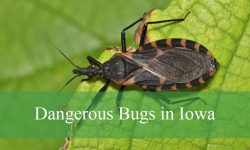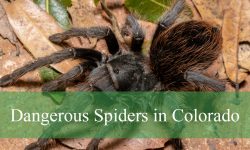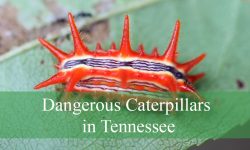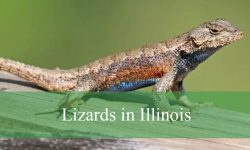Backyard birdwatching in Alabama reveals a vibrant mix of birds that thrive in the state’s varied environments. From bright songbirds to intelligent corvids, Alabama’s forests, fields, and neighborhoods provide ideal habitats for many species throughout the year. Bird lovers of all experience levels can enjoy learning to identify these common feathered visitors.
This guide highlights 40 of the most frequently seen backyard birds in Alabama. Each entry includes detailed descriptions, photos, and identification tips to help you recognize these birds by their appearance, calls, and behaviors. With this resource, spotting and understanding Alabama’s backyard birds becomes easier and more enjoyable.
Common Backyard Birds You Can See in Alabama
Carolina Wren

The Carolina Wren is a small, energetic bird with a loud voice that far exceeds its size. Measuring about 5.5 inches long, it is known for its rich cinnamon-brown upperparts, buff-colored belly, and bold white eyebrow stripe. Its slightly curved bill is perfect for picking insects from bark and crevices, and it holds its tail upright in a perky manner that adds to its charm.
This species is a year-round resident of Alabama and favors brushy edges, overgrown gardens, wooded backyards, and even hanging flowerpots or mailboxes where it might nest. Carolina Wrens feed primarily on insects and spiders but will also eat berries and seeds, particularly in winter. They are curious and bold, often seen exploring porches and patios while delivering their loud, teakettle-like song.
A fascinating behavior of the Carolina Wren is its tendency to build nests in unusual places—anything from boots left outside to empty flower pots. Their monogamous pairs often stay together throughout the year, and both birds may sleep in the same cavity or nest box at night for warmth and security.
Northern Mockingbird
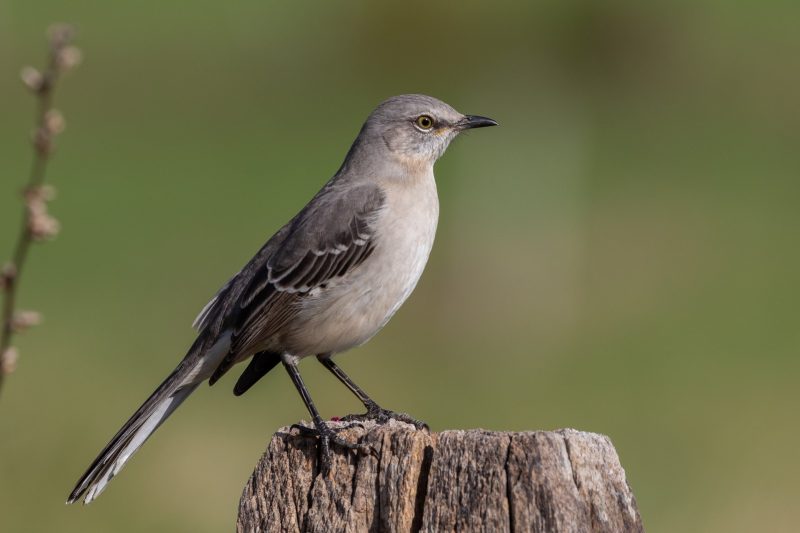
The Northern Mockingbird is a medium-sized bird measuring about 9–10 inches long, with a slender body, long legs, and a long tail. Its gray upperparts, white underparts, and white wing patches—especially visible in flight—make it easy to identify. Though it may appear plain at first glance, this bird more than makes up for it with its vocal abilities.
Common throughout Alabama in residential neighborhoods, parks, and open areas with scattered shrubs and trees, the Northern Mockingbird is a bold and territorial species. It feeds on a mix of insects and fruits, and it’s often seen running on lawns or perching conspicuously while scanning its territory. What sets this bird apart is its ability to mimic the songs of dozens of other birds, as well as mechanical sounds like car alarms and ringtones.
One fun and quirky trait of the Northern Mockingbird is that it can sing up to 200 different song variations. Males sing more actively during the breeding season, and unpaired males may even sing through the night in hopes of attracting a mate.
Mourning Dove
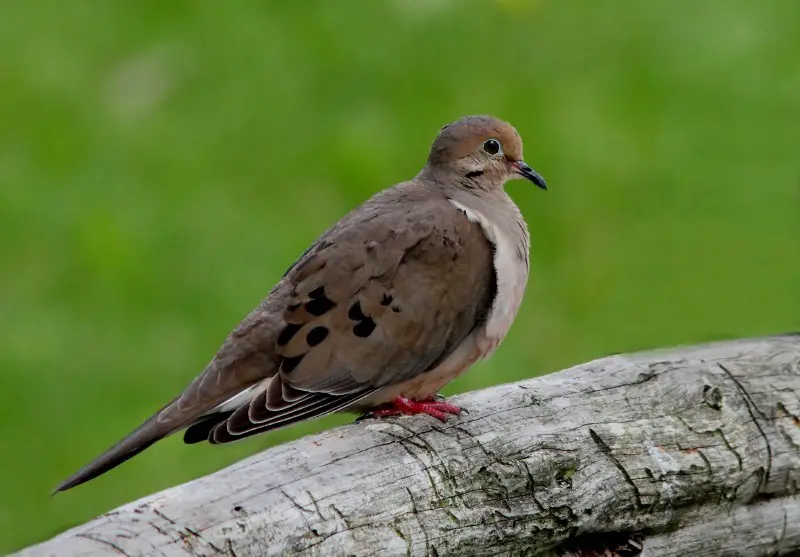
The Mourning Dove is a gentle, slender bird recognized by its soft gray-brown feathers, small head, and long pointed tail with white outer edges. About 12 inches in length, this dove has a delicate build and a soft, mournful cooing call that gives the species its name. In flight, its wings produce a sharp, whistling sound that is unique among doves.
This bird is abundant across Alabama and can be seen in open fields, city parks, suburban backyards, and even along roadsides. Mourning Doves forage primarily on the ground, feeding mostly on seeds and grains. They are frequent visitors to bird feeders, especially when millet or cracked corn is available. Unlike other birds, they can suck up water without tilting their heads back, a trait shared by few species.
A charming fun fact about Mourning Doves is that they are among the most prolific breeders in North America, capable of raising up to six broods per year in warmer regions like Alabama. Their soft, cooing lullaby adds a peaceful presence to many Southern backyards.
Northern Cardinal
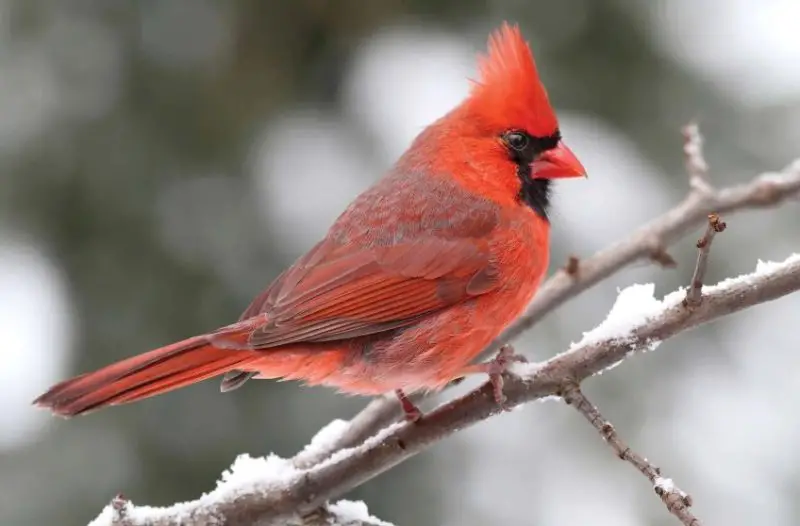
The Northern Cardinal is one of the most iconic backyard birds in Alabama, recognized instantly by its vivid red plumage and striking crest. Males are brilliant red with a black mask around their face and beak, while females are a more muted brown with hints of red on the wings and tail. Both sexes share the distinctive thick orange-red beak. Measuring around 8–9 inches in length, this bird has a strong presence at feeders and is often heard before seen thanks to its melodic, whistling song.
Cardinals are non-migratory and are found year-round across Alabama, thriving in suburban neighborhoods, woodlands, gardens, and forest edges. They prefer areas with dense shrubs or thickets for nesting and protection. Their diet consists mainly of seeds, fruits, and insects, and they are frequent visitors at backyard feeders, especially when sunflower seeds are offered. They are generally ground foragers and may be seen hopping along leaf litter in search of food.
A fun fact about the Northern Cardinal is that unlike most songbirds, both the male and female sing. This is especially rare in North American species and is thought to help strengthen the pair’s bond. The vibrant red of the male also plays a role in mate attraction and territorial defense, making the cardinal a true showstopper in the Alabama backyard bird scene.
Blue Jay
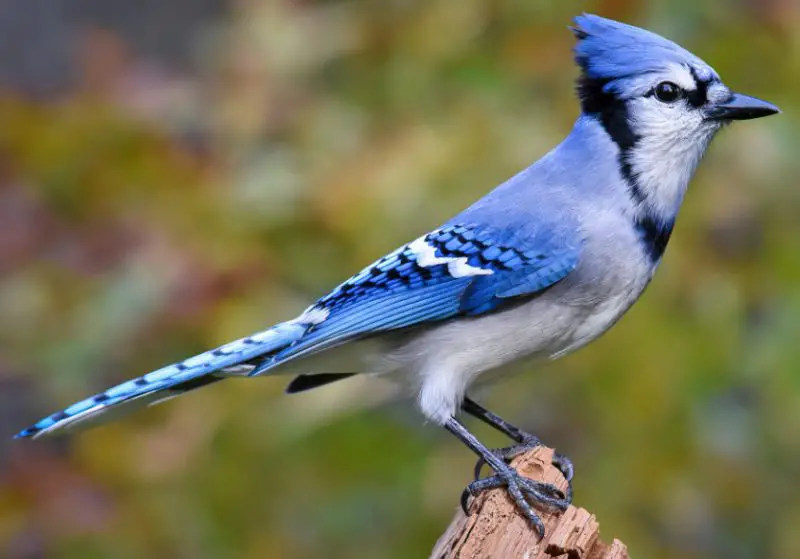
The Blue Jay is a striking bird, easily recognized by its vivid blue feathers, black necklace-like markings, and white face and underparts. Roughly 9–12 inches long, it has a prominent crest on its head and strong black bill. The intricate patterns on its wings and tail feathers, along with its piercing call, make it hard to miss.
Found throughout Alabama in forests, suburbs, and wooded neighborhoods, Blue Jays are intelligent and social birds. They are known for their loud “jay jay” calls and their ability to mimic the cries of hawks. Omnivorous by nature, they feed on acorns, nuts, insects, and occasionally small vertebrates. They often visit feeders for peanuts or sunflower seeds and may even cache food for later use.
An interesting fact about the Blue Jay is its complex social structure and problem-solving skills. Studies have shown that they can use tools and remember the location of hundreds of hidden food caches. Their bold personality and beautiful appearance make them a favorite among backyard birdwatchers in Alabama.
Tufted Titmouse
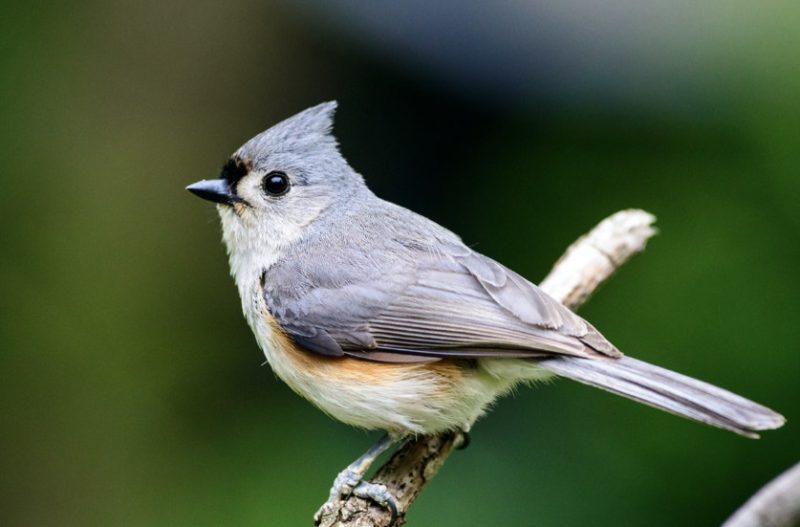
The Tufted Titmouse is a small, round-bodied bird with a prominent gray crest that gives it a perky and inquisitive appearance. It features soft gray upperparts, white underparts, and a rust-colored patch under the wings. Measuring around 6 inches in length, this bird also has large, dark eyes and a short, stout bill, giving it an expressive face.
Common throughout Alabama, Tufted Titmice are year-round residents found in deciduous forests, suburban woodlots, and backyard feeders. They are active and agile, often seen flitting through tree branches or clinging to feeders in small flocks. Their diet includes seeds, nuts, insects, and berries. At feeders, they especially enjoy sunflower seeds and will often grab one and fly off to a nearby branch to crack it open.
A fun fact about the Tufted Titmouse is its habit of hoarding food. During the fall, it will store seeds and other items in bark crevices or leaf litter to retrieve later. It also occasionally plucks hair from animals, such as dogs or squirrels, to use as nesting material—an unusual but resourceful behavior.
Carolina Chickadee
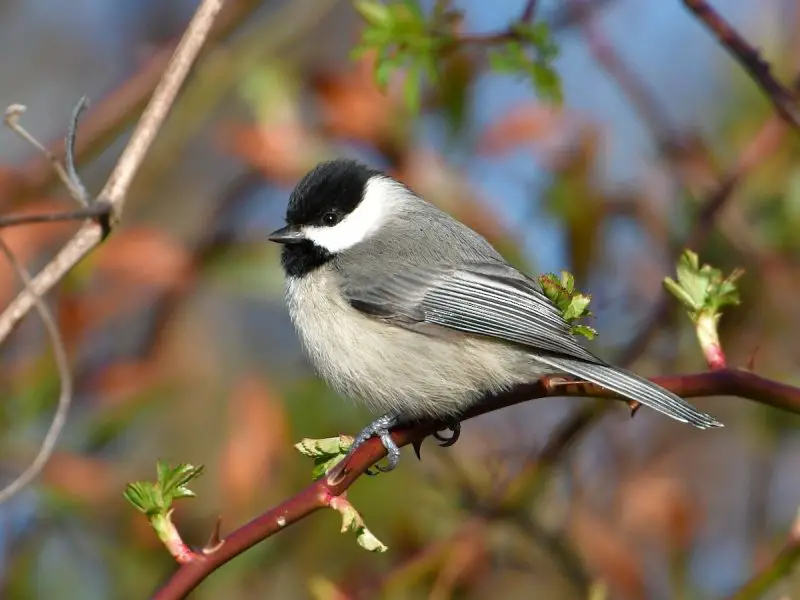
The Carolina Chickadee is a tiny, energetic bird with a distinctive black cap and bib, white cheeks, and soft gray wings. Its small size—only about 4.75 inches in length—and constant motion make it a lively presence at feeders and in wooded yards. It has a short, stubby bill and a sweet, whistled “fee-bee fee-bay” song that’s easy to recognize.
This species is a year-round resident in Alabama and prefers wooded areas, parks, and suburban yards with plenty of trees. Carolina Chickadees are inquisitive and bold, often among the first birds to investigate a new feeder. Their diet consists of insects, spiders, seeds, and berries. In winter, they form mixed flocks with titmice and nuthatches, increasing their foraging efficiency and predator awareness.
An interesting fact about the Carolina Chickadee is that it has excellent spatial memory, enabling it to recall the locations of hundreds of food caches hidden across its territory. Despite its small size, it survives cold winters by roosting in tree cavities or birdhouses to retain body heat.
Red-bellied Woodpecker
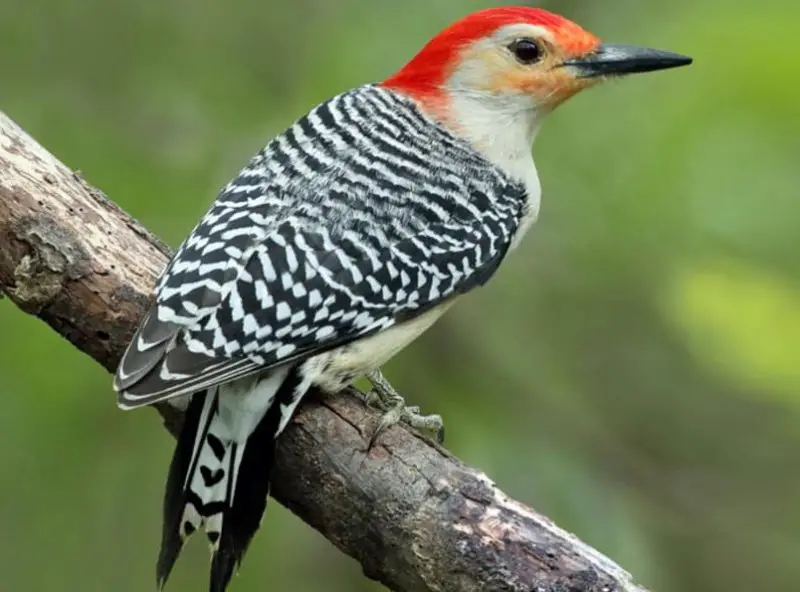
The Red-bellied Woodpecker is a medium-sized woodpecker with striking black-and-white barred wings and a vibrant red cap that extends from the bill to the nape in males, and only to the crown in females. Its name can be misleading—the reddish tinge on its belly is often faint and hard to spot. It measures about 9–10 inches in length and has a strong, chisel-like bill.
Widespread across Alabama, this woodpecker inhabits woodlands, city parks, and backyard areas with mature trees. It drills into tree trunks to feed on insects but also eats nuts, fruits, and seeds, especially in winter. Red-bellied Woodpeckers frequently visit backyard feeders, particularly when suet, peanuts, or sunflower seeds are available. Their loud, rolling “churr” call is commonly heard echoing through the woods.
A fun fact is that Red-bellied Woodpeckers often wedge large food items—such as acorns or nuts—into bark crevices to peck them open later, a behavior called “caching.” They also have a remarkable tongue that can extend nearly two inches past their bill, which helps them extract prey from deep crevices.
American Crow
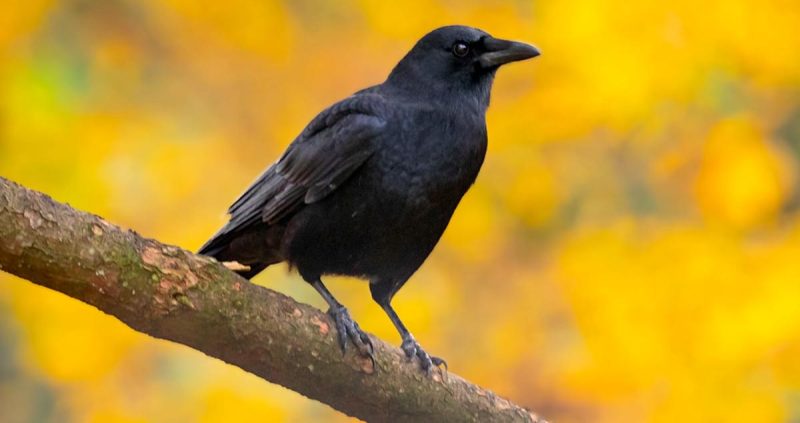
The American Crow is a large, glossy black bird with a stout build and a strong, all-purpose beak. Measuring about 17–21 inches long, it has a square tail and a deep, cawing voice that makes it easy to identify. Though it may look plain, its intelligence and social nature set it apart from most other backyard birds.
Found throughout Alabama year-round, American Crows inhabit a wide range of environments, from farmland and forests to urban neighborhoods. They are omnivorous and opportunistic, eating everything from insects and seeds to small animals and garbage. Crows are rarely seen alone; they travel in family groups and sometimes form large communal roosts during winter, numbering in the hundreds.
An especially fascinating fact about American Crows is their problem-solving ability and use of tools. They can recognize individual human faces, communicate complex information, and even hold grudges. These birds also participate in group parenting, where older siblings help care for younger nestlings.
Indigo Bunting
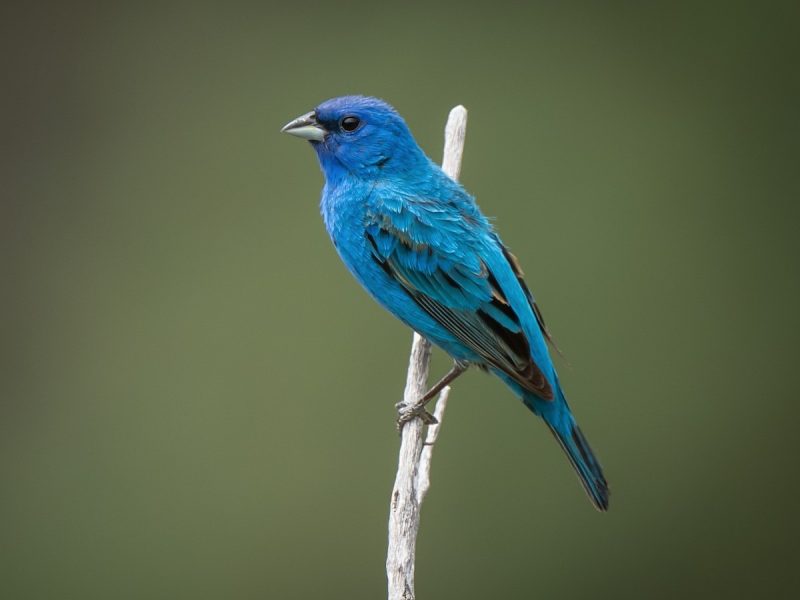
The Indigo Bunting is a dazzling bird known for the male’s vivid, all-over blue plumage that glows like sapphire in sunlight. Females are brown with subtle blue tinges on the wings, providing effective camouflage for nesting. This small songbird measures about 5 inches in length and has a short, conical beak suited for seed-eating.
In Alabama, Indigo Buntings are migratory and most often seen from spring through early fall. They prefer shrubby fields, forest edges, roadsides, and weedy backyards. Males perch in prominent spots to sing their cheerful, warbling song throughout the day during breeding season. Their diet includes seeds, berries, and insects, and they occasionally visit feeders, especially for thistle or millet.
A unique fact about Indigo Buntings is that they navigate by the stars during their long migratory journeys. Even captive birds will attempt to orient themselves according to starlight in simulated night skies, a behavior known as celestial navigation. Their striking appearance and melodic voice make them a favorite among birdwatchers in Alabama.
Eastern Towhee
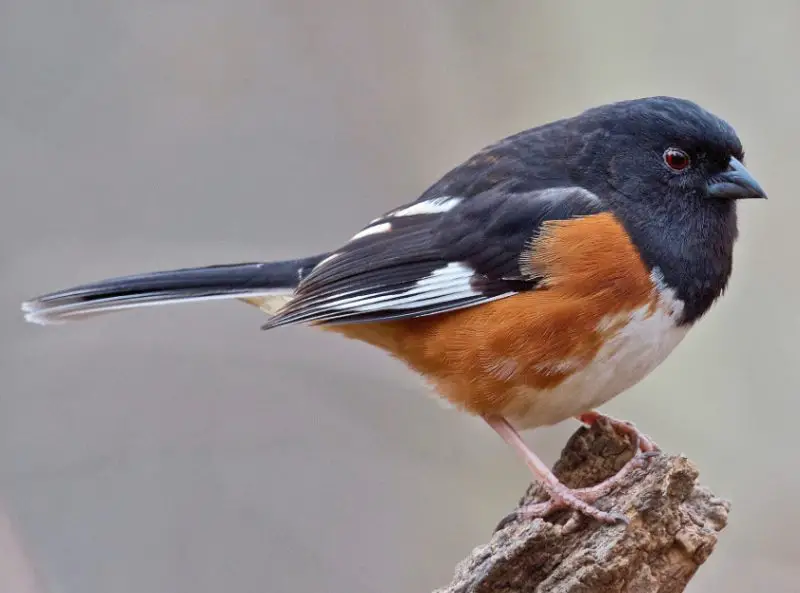
The Eastern Towhee is a striking and somewhat secretive bird known for its bold colors and scratchy call. Males display black upperparts, a white belly, and rich rufous sides, while females are similarly patterned but with brown replacing the black. About 7–8 inches long, they have a chunky body, red eyes, and a long tail with white outer feathers that flash when they fly or flick their tail.
This bird is a year-round resident in Alabama, favoring dense shrubs, forest edges, and overgrown thickets. Eastern Towhees forage primarily on the ground, using a distinctive double-scratch method—hopping forward and then scratching backward to uncover insects, seeds, and berries in the leaf litter. Although they can be shy, their sharp “chewink” call often gives away their location.
A fun fact about the Eastern Towhee is that its song sounds like the phrase “drink-your-tea,” often repeated from a low perch within brushy habitat. Despite their preference for staying hidden, males will perch more openly during the breeding season to deliver this loud, memorable tune.
Eastern Bluebird
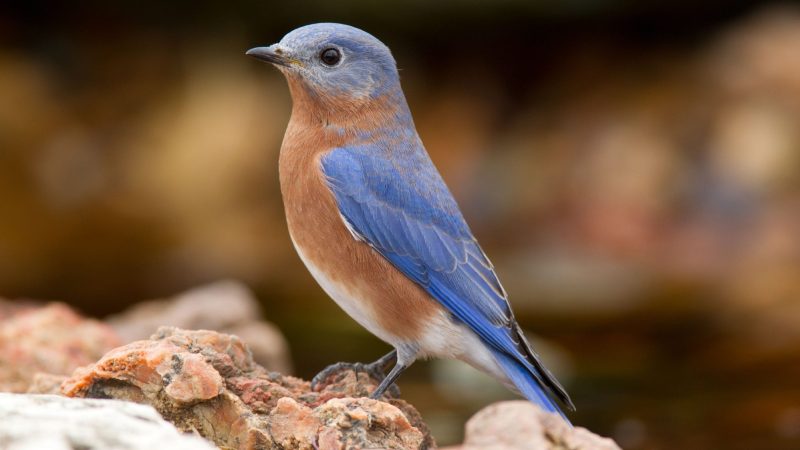
The Eastern Bluebird is one of the most beloved backyard birds, known for the male’s vivid blue upperparts and warm reddish-orange chest. Females have more subdued colors with grayish-blue wings and a paler breast, but both sexes share the same charming, upright posture and sweet expression. These birds are about 6.5–7 inches in length and have a relatively short tail and slender build.
Common throughout Alabama, Eastern Bluebirds prefer open fields, orchards, pastures, and suburban areas with scattered trees and nest boxes. They primarily eat insects during the warm months—such as beetles, caterpillars, and grasshoppers—but switch to berries and small fruits in winter. They are cavity nesters and readily use man-made birdhouses, especially when placed in open grassy areas.
A fun and heartwarming fact is that Eastern Bluebirds often form family groups after the breeding season, with young birds helping their parents raise the next brood. Their gentle demeanor and cheerful “chur-lee” song make them a welcome sight in many Alabama yards.
Yellow-rumped Warbler
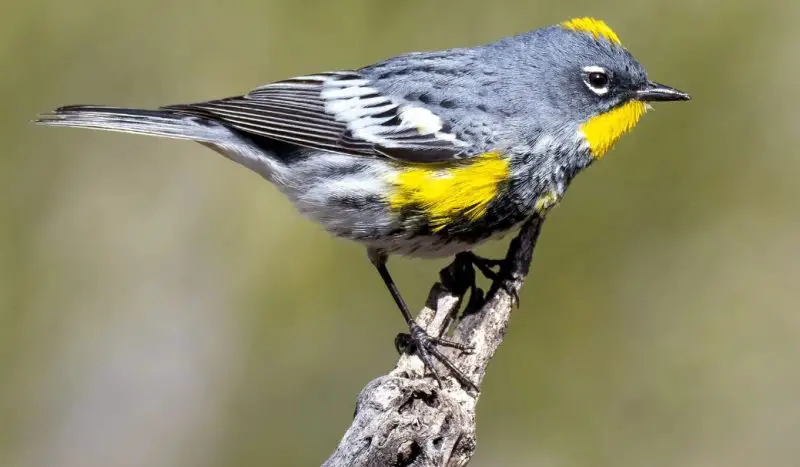
The Yellow-rumped Warbler is a small, active bird that’s easy to recognize during migration and winter thanks to the bright yellow patches on its rump, sides, and crown. Breeding males are gray with black streaks and white underparts, while females and nonbreeding individuals appear browner with more subdued markings. They are about 5.5 inches long and have a slightly notched tail and slender build.
In Alabama, Yellow-rumped Warblers are winter visitors, often seen from late fall through early spring. They frequent wooded areas, parks, and backyard landscapes with mature trees. Their diet includes insects, berries, and waxy fruits like bayberries and wax myrtles—making them one of the few warblers that can digest wax-coated fruit. They flit energetically through branches and often hover briefly to glean insects.
An interesting fact is that their ability to eat waxy berries allows them to winter farther north than most other warblers. You may even see them visiting suet feeders or birdbaths in Alabama yards during the cooler months.
American Robin

The American Robin is a familiar and widespread bird, easily recognized by its orange-red breast, gray back, and yellow bill. Slightly over 9 inches long, robins have a rounded body, upright posture, and a cheery presence that signals the arrival of spring for many. Juveniles have speckled chests, which gradually molt into adult plumage.
American Robins are common year-round residents in most of Alabama, though they become more conspicuous during migration and breeding seasons. They forage mostly on lawns, hopping and pausing as they search for earthworms, insects, and occasionally berries. In fall and winter, their diet shifts toward fruit, and large flocks can be seen gathering in trees to feed. They often build cup-shaped nests in trees, shrubs, or on man-made structures.
A fun fact is that robins have excellent vision and can spot tiny movements underground to locate worms. Contrary to popular belief, they aren’t always a true sign of spring in Alabama since many remain here through the winter, quietly foraging in wooded areas.
House Finch
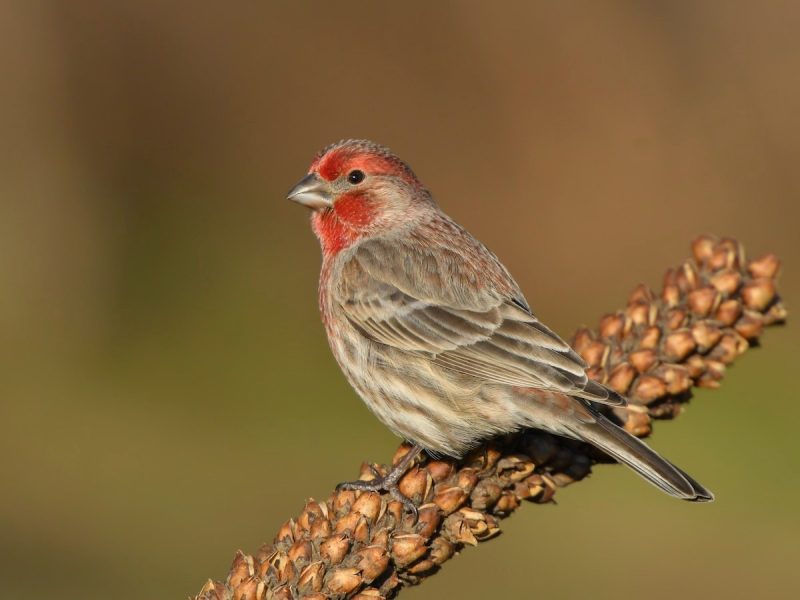
The House Finch is a small, sociable songbird with a cheerful disposition and a distinctive red wash on the head, throat, and chest of the males. Females are streaky brown and lack the red coloring but share the same compact size of about 5.5 inches and a conical seed-cracking bill. Both sexes have relatively short tails and fluttery flight patterns.
Originally native to the western United States, House Finches have successfully spread eastward and are now common year-round residents in Alabama. They thrive in suburban areas, cities, farms, and anywhere with trees and shrubs. Their diet consists mainly of seeds, fruits, and occasionally buds, and they are frequent visitors to backyard feeders, especially those with sunflower or nyjer seeds.
A fun fact about House Finches is that the red coloration in males comes from pigments in their diet—more carotenoid-rich food leads to brighter red feathers, which can influence female choice during mating. Their sweet, warbling song is a common sound in Alabama backyards and can be heard almost year-round.
White-throated Sparrow
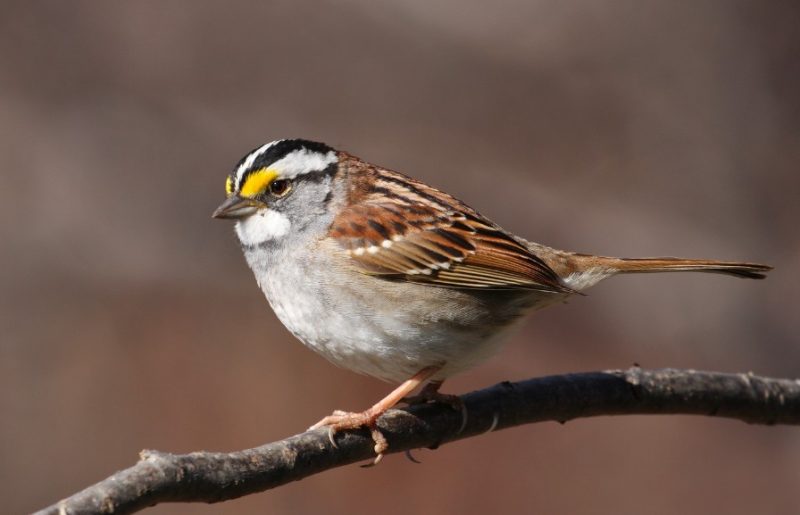
The White-throated Sparrow is a plump, medium-sized songbird with a distinctive appearance. It features bold black-and-white stripes on its head, a bright white throat patch bordered by a dark outline, and a splash of yellow between the eyes and bill. Its underparts are gray, and the back is streaked brown. Measuring about 6.5–7 inches long, it has a slightly rounded tail and a gentle, hunched posture.
In Alabama, White-throated Sparrows are winter visitors, typically arriving in late fall and departing by early spring. They favor brushy edges, wooded backyards, and leaf-littered gardens where they forage on the ground. Their diet includes seeds, berries, and insects, and they often scratch through leaves using a two-footed hop. Although somewhat shy, they will visit ground feeders, especially when millet or cracked corn is available.
A charming fact about this species is its sweet, whistled song that sounds like “Oh-sweet-Canada-Canada” or “Old-Sam-Peabody-Peabody,” depending on the listener’s interpretation. They sing even in winter, adding a melodic touch to the quieter season in Alabama’s backyard landscapes.
Downy Woodpecker
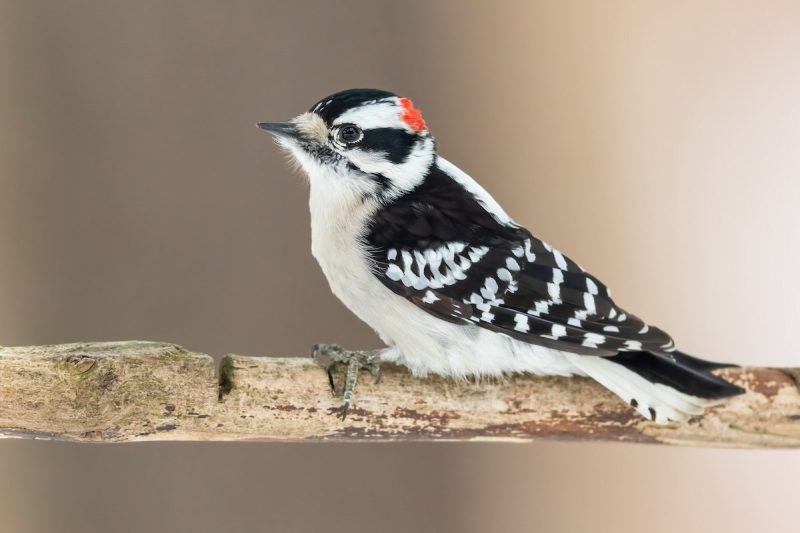
The Downy Woodpecker is the smallest woodpecker in North America, measuring just 6–7 inches long. It has a black-and-white checkered back, white underparts, and a white stripe down the center of its back. Males have a small red patch on the back of the head, while females do not. Its short, chisel-like bill is noticeably smaller than that of other woodpeckers, contributing to its dainty appearance.
Found year-round in Alabama, Downy Woodpeckers live in woodlands, parks, orchards, and suburban yards. They are frequent visitors at suet feeders and are also fond of sunflower seeds and peanuts. Agile and acrobatic, they often hang from twigs and small branches as they probe for insects and larvae hiding in bark. Their sharp “pik” calls and rapid drumming can be heard throughout the day.
A fun fact is that Downy Woodpeckers can often be seen in mixed-species foraging flocks with chickadees, titmice, and nuthatches. Their presence in such groups helps improve safety and foraging success, and their small size allows them to explore branches too thin for larger woodpeckers to perch on.
Eastern Phoebe
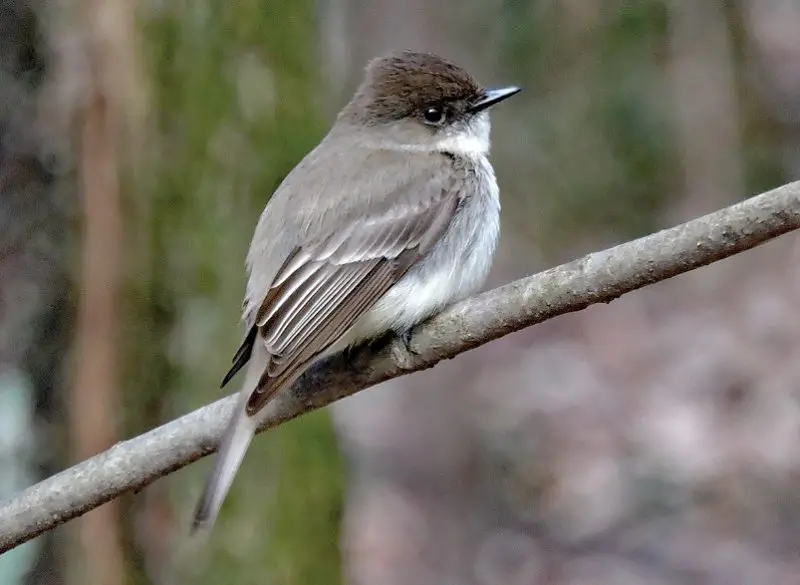
The Eastern Phoebe is a modestly colored flycatcher with a soft gray-brown back, pale underparts, and a slightly darker head. It measures about 6.5 inches long and often flicks its tail downward while perched. Though lacking bright colors, it’s easily identified by its upright posture and constant tail-bobbing behavior.
In Alabama, Eastern Phoebes are common from late winter through summer and occasionally overwinter in milder parts of the state. They prefer open woodlands, farmyards, and areas near water, often nesting under eaves, bridges, or porch roofs. Phoebes hunt by watching from a low perch and then darting out to snatch flying insects midair, returning quickly to the same spot.
An interesting fact about Eastern Phoebes is that they were the first North American bird species ever banded for scientific study, by John James Audubon in the early 1800s. They often return to the same nesting sites year after year, making them loyal backyard visitors for observant birdwatchers.
American Goldfinch
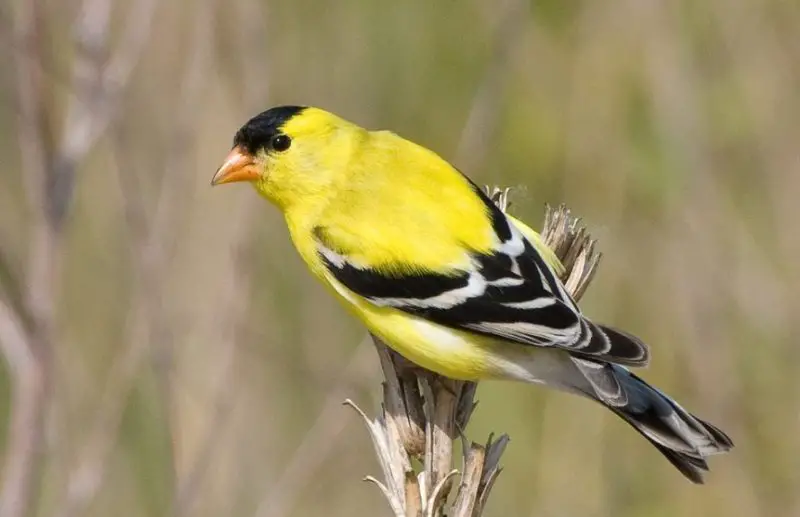
The American Goldfinch is a small, vibrant songbird beloved for its bright plumage and cheerful song. Breeding males are a brilliant lemon-yellow with black wings, cap, and tail, while females and nonbreeding males are more olive-toned with less contrast. All have conical beaks and a distinctive undulating flight pattern. Their size is petite, around 5 inches long.
Goldfinches are found year-round in northern Alabama but more commonly seen across the state during winter months. They inhabit weedy fields, meadows, and suburban gardens, especially where thistle and sunflowers grow. They are frequent feeder visitors, preferring nyjer seed and sunflower hearts. Unlike most songbirds, they breed later in the summer when seeds are most abundant.
A fun fact is that American Goldfinches undergo a complete molt twice a year, which is rare among songbirds. Their dramatic change from drab winter coloring to vibrant summer feathers makes them a symbol of seasonal renewal in Alabama gardens and fields.
Red-winged Blackbird
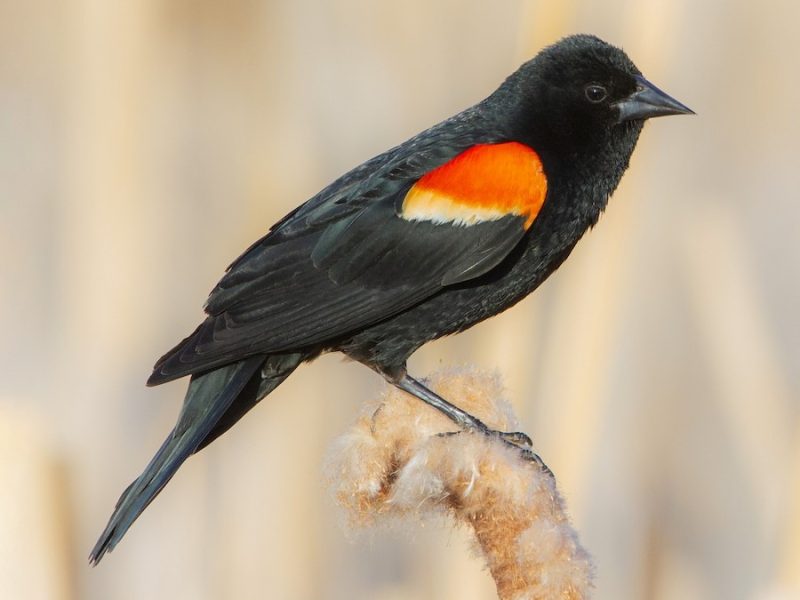
The Red-winged Blackbird is a striking and unmistakable bird, especially the male with his glossy black plumage and vivid red-and-yellow shoulder patches, or epaulets. Females look quite different—they are heavily streaked brown with a white eyebrow and are often mistaken for large sparrows. These birds range from 7 to 9 inches long and have long, pointed wings and a slightly curved bill.
Abundant across Alabama, Red-winged Blackbirds are often seen in wetlands, marshes, and open fields, but they also visit feeders, especially those offering cracked corn or mixed seed. Males are fiercely territorial and perch high on reeds or fenceposts to sing their loud, conk-la-ree! song during the breeding season. Their diet includes seeds, grains, and insects, and they often forage in large flocks during fall and winter.
A fascinating fact is that Red-winged Blackbirds form enormous communal roosts outside the breeding season, sometimes numbering in the thousands. These dense flocks, made up of blackbirds, starlings, and grackles, are a dramatic and unforgettable sight as they swirl across Alabama’s evening skies.
Barn Swallow
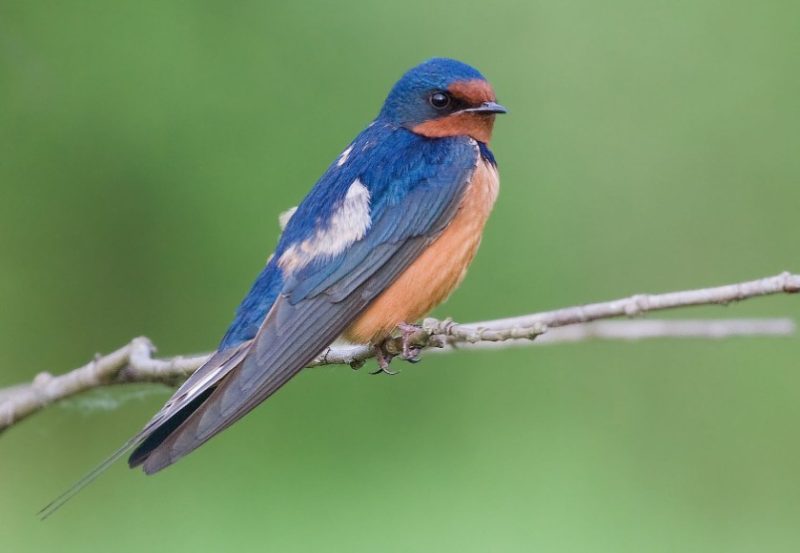
The Barn Swallow is a graceful, aerial insectivore known for its acrobatic flight and distinctive forked tail. It sports a glossy blue back, cinnamon-colored underparts, and a rusty throat and forehead. Measuring about 6.5 to 7 inches long, it has long, pointed wings and a streamlined body designed for agile flight. The tail streamers are longer in males and often used to attract mates.
In Alabama, Barn Swallows are summer residents and are frequently seen swooping low over fields, ponds, and backyards in search of flying insects. They often build their cup-shaped mud nests on man-made structures such as barns, bridges, and porch ceilings. These social birds may nest in colonies and are often heard giving cheerful chirps and warbles during flight.
A fun fact about Barn Swallows is their long-distance migration—many travel over 6,000 miles each way between North and South America. Their return each spring is a welcome sign of warmer days ahead and a vibrant reminder of nature’s seasonal rhythms.
Ruby-crowned Kinglet
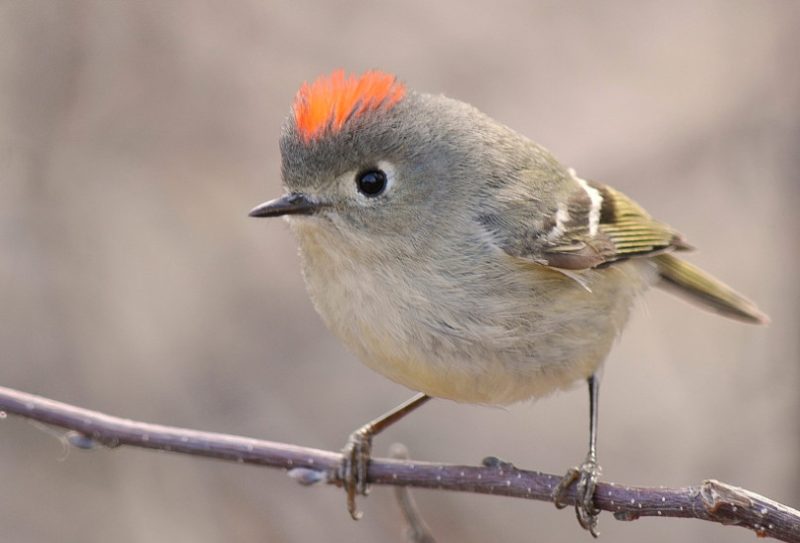
The Ruby-crowned Kinglet is a tiny, energetic bird that flits constantly through tree branches. It’s olive-green with a white eye ring and wing bars, and males have a concealed bright red crown that’s only raised during moments of excitement or aggression. These birds measure just 3.5 to 4.5 inches long but seem much larger due to their boundless energy.
In Alabama, Ruby-crowned Kinglets are primarily winter visitors, favoring woodlands, suburban yards, and shrubby thickets. They feed on small insects, spiders, and occasionally berries, often hovering briefly or flitting from branch to branch. Their song is surprisingly loud and complex for such a small bird, consisting of high-pitched notes and rapid trills.
A fun fact about Ruby-crowned Kinglets is that they can survive in colder climates than many other insectivores, thanks to their ability to rapidly forage and their high metabolic rate. They’re often seen in constant motion, flicking their wings as they search for food among leaves and needles.
Chipping Sparrow
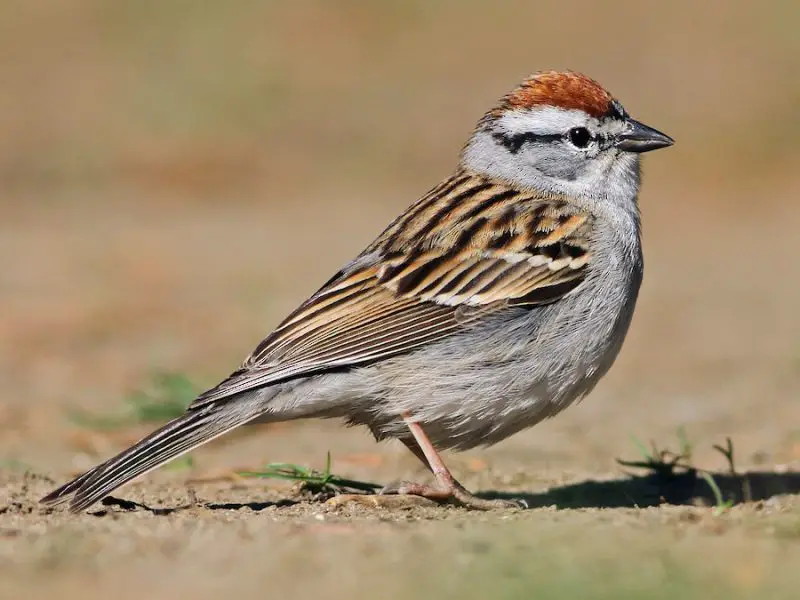
The Chipping Sparrow is a slim, elegant sparrow easily recognized by its rusty-red cap, crisp black eye line, and grayish underparts. It has a slender bill, light brown streaked back, and a clean appearance that distinguishes it from many other sparrow species. This bird measures around 5 to 5.5 inches long and has a graceful, fluttery flight.
Widespread in Alabama, Chipping Sparrows are found in open woodlands, parks, gardens, and suburban lawns. They are year-round residents in some areas but are more commonly seen during migration and the breeding season. These sparrows forage mostly on the ground for seeds and small insects and are frequent visitors at feeders, especially in winter.
A fun fact about the Chipping Sparrow is its soft, dry trill song, which resembles the sound of a sewing machine. During nesting season, they build tidy, cup-shaped nests in shrubs or small trees, sometimes only a few feet off the ground, making them easy to observe in backyard settings.
Pine Warbler
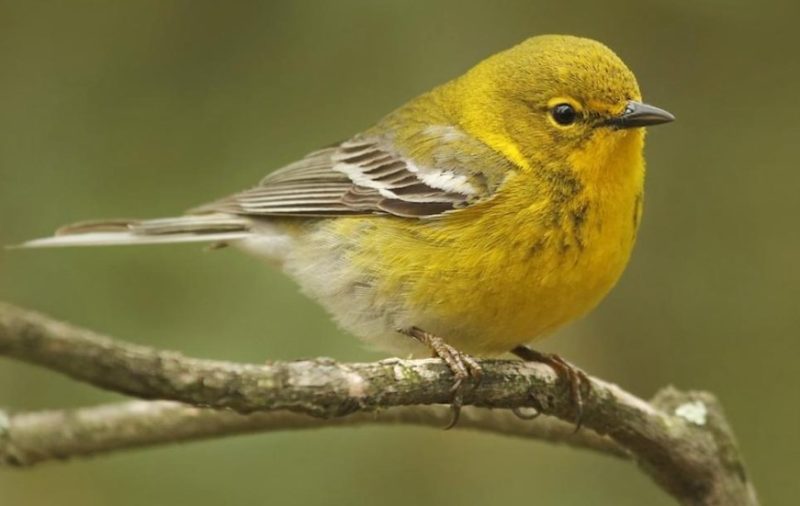
The Pine Warbler is a sturdy, yellowish warbler that tends to be more reserved than its more tropical-looking relatives. Adult males are bright yellow with olive backs and white wing bars, while females and juveniles are duller with more grayish tones. This warbler measures about 5.5 inches long and has a thicker bill compared to other warblers.
In Alabama, Pine Warblers are often year-round residents and are closely tied to pine forests and mixed woodlands. They are one of the few warblers that regularly visit feeders, especially during winter, where they may eat suet, sunflower seeds, or mealworms. They forage slowly among pine needles, searching for insects, caterpillars, and seeds, often high in the canopy.
A fun fact about the Pine Warbler is that it’s one of the earliest singing songbirds in spring, sometimes beginning its gentle, musical trill even in February. Its close association with pine trees makes it an easy bird to target for identification by habitat.
European Starling

The European Starling is a highly adaptable and bold bird with shimmering iridescent feathers that appear black but reveal purples, blues, and greens in good light. During breeding season, their plumage is glossy, while in winter, they take on a speckled appearance. These birds measure about 8 inches long and have a short tail, yellow bill in summer, and pink legs.
Originally introduced from Europe, starlings are now widespread across Alabama and the rest of North America. They thrive in urban areas, farmland, and suburbs, nesting in cavities and often displacing native birds. Highly gregarious, starlings form enormous flocks, especially outside of breeding season. They feed on insects, fruits, grains, and scraps and are regulars at feeders.
A fascinating behavior of European Starlings is their dazzling murmuration displays, where thousands of birds move in swirling, synchronized patterns across the sky. Though not always welcomed for their invasive status, these displays are among the most mesmerizing sights in the bird world.
Common Grackle
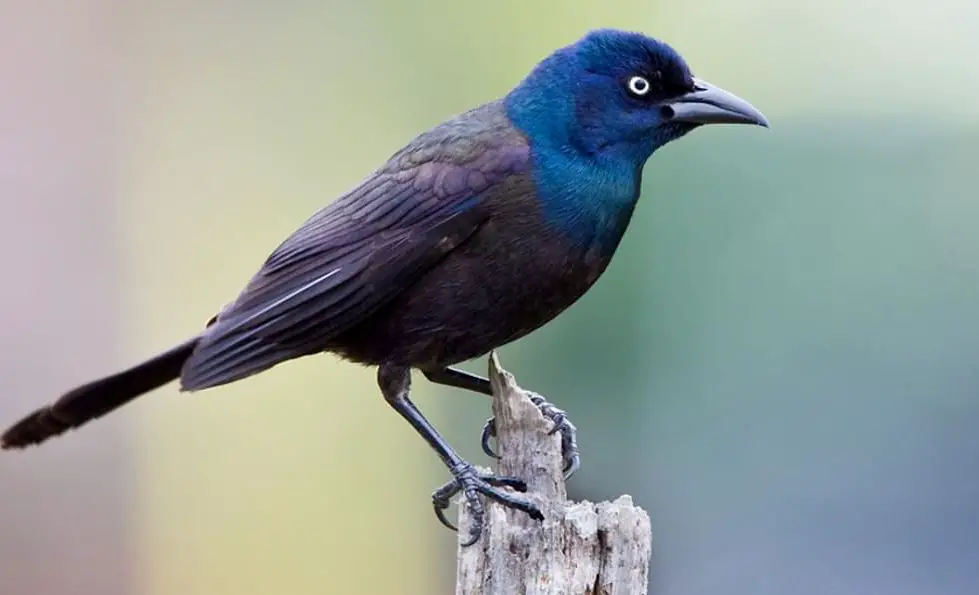
The Common Grackle is a large, glossy blackbird with a striking iridescent sheen that shimmers purple, green, or blue in the sunlight. Males are especially glossy, while females appear duller but still reflect subtle coloration. These birds have long legs, a straight bill, and a long keel-shaped tail. They measure around 11–13 inches in length, making them larger than most backyard birds.
Grackles are found year-round throughout Alabama, thriving in suburban lawns, farmlands, wetlands, and city parks. They forage boldly on the ground for insects, seeds, grains, and even garbage, often in noisy flocks. At feeders, they tend to dominate smaller birds and may arrive in groups, especially during migration or colder months. Their harsh, raspy calls and metallic squeaks are unmistakable.
A fun fact about Common Grackles is their unique foraging behavior—they have been observed dropping hard-shelled insects into water to soften them or removing the husks of corn by prying open the kernels with their beaks. Despite their boldness, they play a valuable role in controlling pest insects in agricultural areas.
Ruby-throated Hummingbird
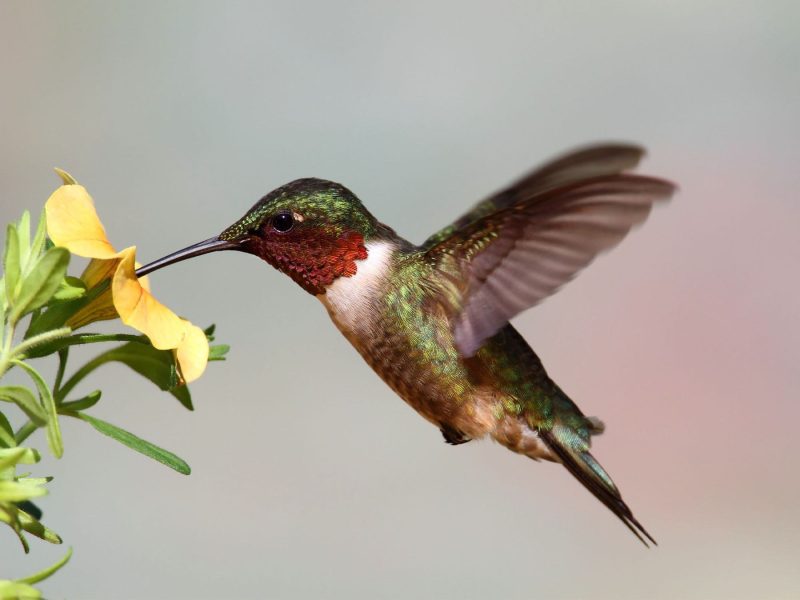
The Ruby-throated Hummingbird is a tiny, fast-flying marvel of nature, measuring just 3–3.5 inches long. Males are best known for their shimmering ruby-red throat, emerald-green back, and white belly, while females lack the red throat but share the same glittering green plumage. Their wings beat up to 80 times per second, producing a faint buzzing sound in flight.
This hummingbird is the only regularly occurring species in the eastern U.S. and is a common summer visitor to Alabama. They favor flower-filled gardens, woodland edges, and backyards with nectar feeders. Ruby-throated Hummingbirds feed on flower nectar and small insects, hovering midair or perching briefly between feeding bouts. They are highly territorial and will aggressively chase off rivals from their favorite feeding spots.
A fascinating fact is that despite their tiny size, Ruby-throated Hummingbirds migrate up to 500 miles nonstop across the Gulf of Mexico each spring and fall. Their incredible endurance and shimmering beauty make them a backyard favorite among birdwatchers across the South.
White-breasted Nuthatch
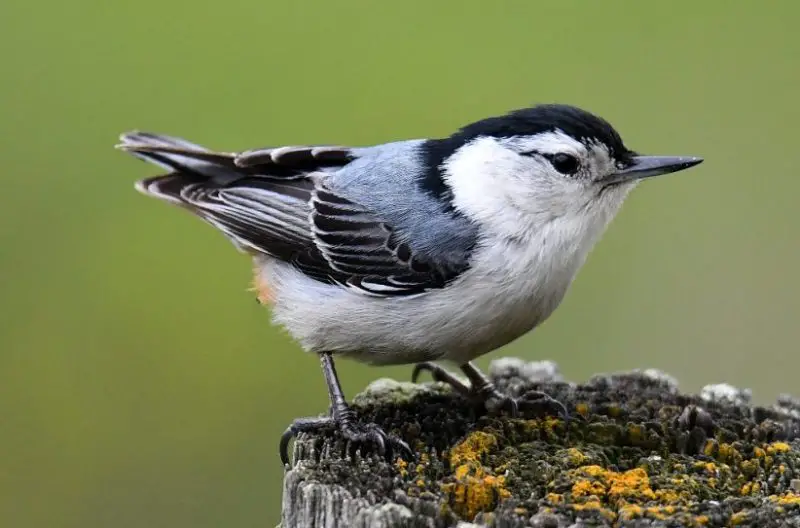
The White-breasted Nuthatch is a small, agile bird with a clean white face and underparts, blue-gray back, and a black crown. It measures about 5–6 inches long and is often seen moving headfirst down tree trunks—an unusual behavior that sets it apart from other birds. Its slightly upturned bill is ideal for prying insects from bark crevices.
Found year-round in Alabama, this bird prefers mature deciduous forests, wooded suburbs, and backyards with large trees. It feeds on insects, spiders, seeds, and nuts, and is a frequent visitor to suet and peanut feeders. White-breasted Nuthatches are often seen in pairs, especially in winter, when they join mixed-species foraging flocks.
A fun fact about this nuthatch is its habit of caching food in tree bark or other hidden spots for later consumption. It also gets its name from its behavior of wedging seeds into crevices and then “hatching” them open with its beak—showcasing both its strength and cleverness despite its small stature.
House Sparrow
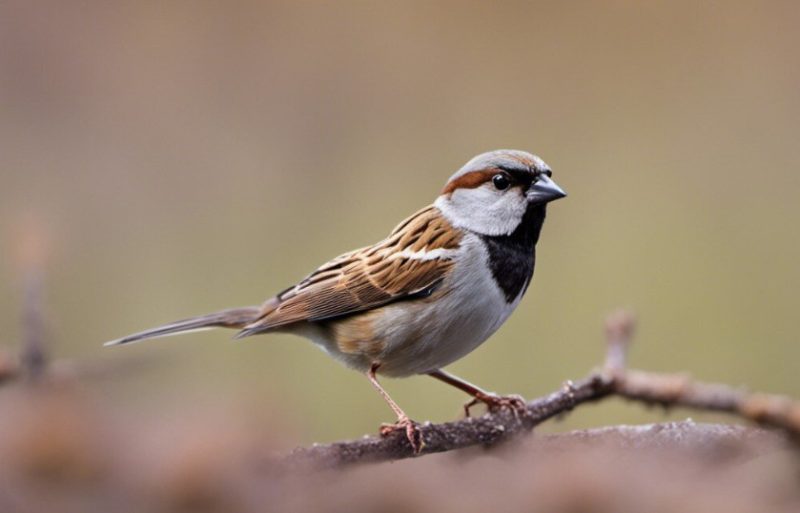
The House Sparrow is a small, stocky bird with a short tail and stout bill. Males have gray crowns, black bibs, chestnut napes, and streaked brown backs, while females and young are more uniformly brown and streaked with pale underparts. They average about 6 inches in length and are often seen in bustling, vocal flocks.
Introduced from Europe in the 19th century, House Sparrows have since spread across all of Alabama and are now among the most widespread urban birds. They favor city streets, shopping centers, farms, and residential areas where they nest in building crevices, vents, or nest boxes. Their diet consists of seeds, grains, insects, and scraps, and they are frequent visitors to backyard feeders.
A unique fact about House Sparrows is their remarkable adaptability to human environments. They are one of the few bird species whose global success is largely due to their close association with people, even nesting and thriving in some of the busiest, least “natural” settings on the planet.
Summer Tanager
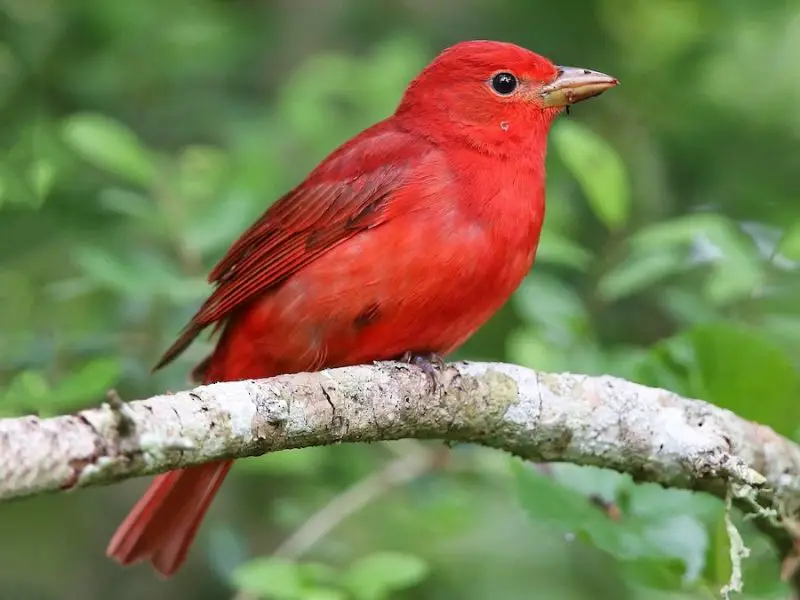
The Summer Tanager is a stunning songbird, with males showcasing all-over bright red plumage, making them one of the only entirely red birds in North America. Females are a contrasting warm yellow-olive color. These medium-sized birds measure around 7 inches long and have a slightly thick, curved bill suited for catching insects.
In Alabama, Summer Tanagers are common breeding birds during spring and summer, especially in open woodlands, pine forests, and well-wooded suburban areas. They primarily feed on bees, wasps, and other flying insects, which they catch in flight. They are also known to eat fruit and berries. Their gentle, melodic song is a familiar sound in the treetops during the warmer months.
A fascinating fact is that Summer Tanagers specialize in hunting bees and wasps. They remove the stinger by rubbing the insect against a branch before swallowing it—making them a welcome presence around areas with heavy insect populations.
Northern Flicker
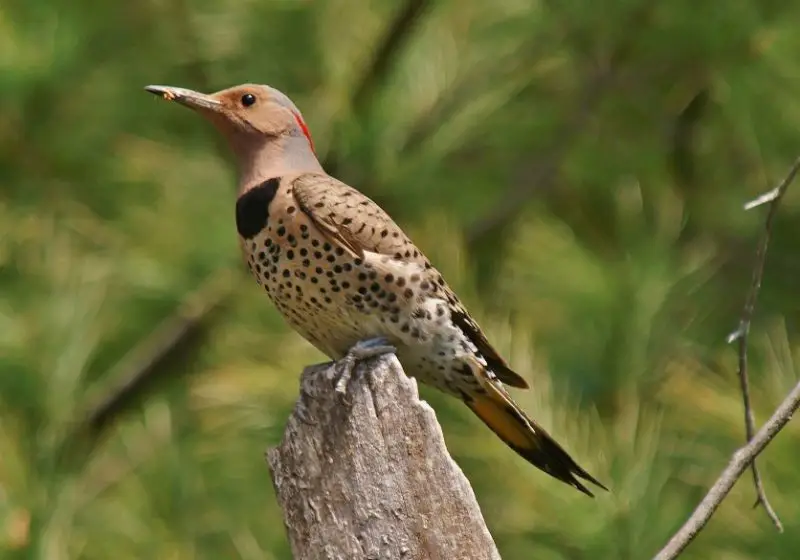
The Northern Flicker is a large, ground-feeding woodpecker with a unique appearance. In the southeastern U.S., including Alabama, the “Yellow-shafted” form is most common. It has a brownish body with black spots, a black crescent on the chest, and yellow under the wings and tail. Males also sport a black mustache stripe. They measure about 11–12 inches long.
Unlike most woodpeckers, Northern Flickers often forage on the ground, searching for ants and beetles, which make up a large part of their diet. They can be found year-round in Alabama, favoring open woodlands, yards, and edges of forests. Their loud, ringing call and repetitive drumming on tree trunks—or even metal roofs—make their presence known.
A fun fact is that Northern Flickers are one of the few woodpeckers that regularly migrate. While some stay year-round, northern populations move south in winter. Their bright yellow wing linings are especially visible in flight, giving them a distinctive flash of color when they take off.
Pileated Woodpecker
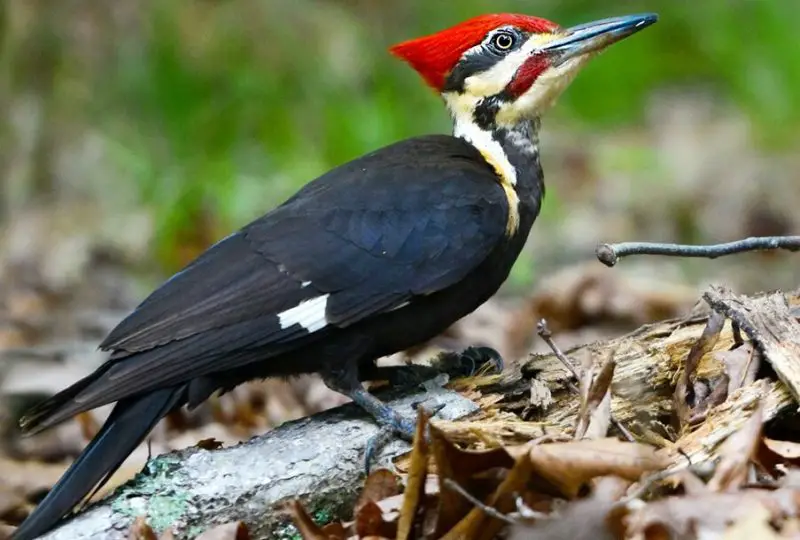
The Pileated Woodpecker is the largest woodpecker in Alabama, nearly the size of a crow, reaching up to 16–19 inches in length. It is jet black with bold white stripes on the neck and a blazing red crest on top of its head. Males also have a red mustache stripe. With its broad wings and strong bill, it is a powerful and unmistakable presence in the forest.
These majestic woodpeckers are found year-round in mature hardwood forests across Alabama. They excavate large, rectangular holes in dead trees while searching for carpenter ants, their primary food source. They may also feed on beetle larvae, fruits, and nuts. Their loud, echoing call—a series of “kuk-kuk-kuk” notes—can be heard echoing through the woods, and their powerful drumming often sounds like heavy hammering.
A fun fact is that the Pileated Woodpecker’s excavation holes are so large that they often provide nesting or roosting sites for other birds, including owls and smaller woodpeckers. Their dramatic appearance and loud calls make them a thrilling sight for birders lucky enough to spot one in the Alabama woods.
Cedar Waxwing
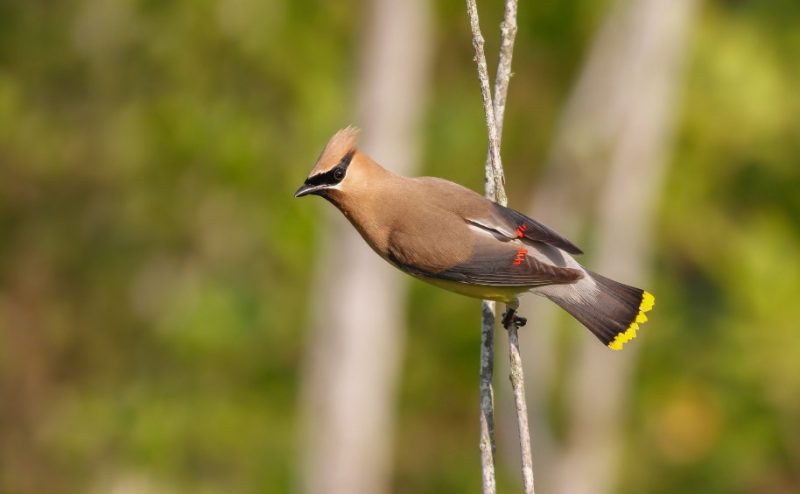
Cedar Waxwings are sleek, elegant songbirds known for their silky, tan-brown plumage, black mask, and yellow-tipped tail. Adults often display red wax-like tips on their secondary wing feathers, giving the bird its name. These medium-sized birds measure about 6 to 7 inches long with a wingspan of 8.5 to 11.5 inches. In Alabama, they are most commonly seen in flocks during fall and winter, especially near berry-producing trees and shrubs.
These birds are fruit specialists, feeding heavily on berries such as cedar, dogwood, serviceberry, and juniper. They also consume insects during summer, often catching them mid-air with agile flight. Cedar Waxwings are highly social and often feed and migrate in flocks, communicating with high-pitched, trilling calls. Their courtship involves passing a berry or flower petal back and forth between mates.
A fun fact about Cedar Waxwings is that their diet can sometimes tint their tail tips orange instead of yellow, depending on the pigments in their food. They’re one of the few North American birds that can survive on fruit alone for long periods, making them a unique sight in Alabama’s woodlands, orchards, and suburban yards.
Brown Thrasher

The Brown Thrasher is a bold, reclusive bird with rich reddish-brown upperparts, pale underparts streaked with black, and bright yellow eyes. It has a long, slightly curved bill and a notably long tail that often flicks while foraging. At about 9 to 12 inches in length with a wingspan of up to 13 inches, this bird is one of the largest of the Mimidae family. In Alabama, they are year-round residents and often stay hidden in dense shrubs and thickets.
Brown Thrashers are ground foragers, using their long bills to sweep through leaf litter in search of insects, earthworms, seeds, and berries. They’re known for their incredible vocal range—each bird can sing more than 1,000 different song types, often mimicking other species. Despite their shy demeanor, they can be fiercely territorial, especially during nesting season.
A fun fact is that the Brown Thrasher is the state bird of Georgia, Alabama’s neighbor. Their secretive behavior makes them more often heard than seen, but patient birdwatchers can spot them darting through tangles of brush or singing from hidden perches in suburban hedges and woodland edges.
Great Crested Flycatcher

The Great Crested Flycatcher is a striking bird with a lemon-yellow belly, olive-brown back, and a rufous-colored tail and wings. Its head appears slightly crested, and its strong bill is well-adapted for catching flying insects. Measuring about 8.5 inches long with a wingspan of 13 inches, this bird is a common summer visitor in Alabama’s woodlands and parks.
These flycatchers prefer to perch quietly in the forest mid-story, darting out quickly to snatch insects in mid-air. Their diet also includes caterpillars, wasps, spiders, and even small lizards or berries when insects are less abundant. They nest in tree cavities, often reusing old woodpecker holes or nest boxes, and are known to incorporate shed snakeskin into their nests.
A fun and peculiar behavior of the Great Crested Flycatcher is its frequent use of snakeskin or similar materials—like plastic wrappers—to line its nest. This might serve as a predator deterrent. In Alabama, their loud, rising “whee-eep” calls are often heard echoing through deciduous forests in spring and summer.
Yellow-throated Warbler
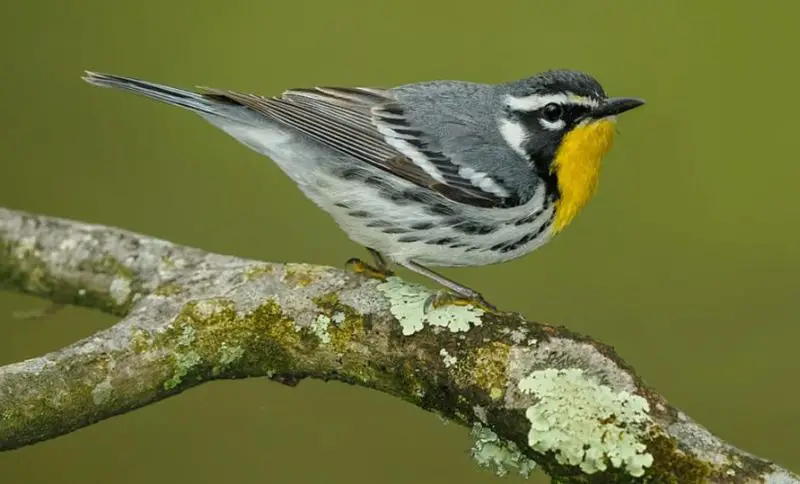
The Yellow-throated Warbler is a vibrant and agile bird with a bright yellow throat, white belly, and a black-streaked gray back. It features a distinctive black-and-white face pattern that makes it easy to identify. This medium-sized warbler measures around 5.5 inches in length and has a wingspan of roughly 8 inches. In Alabama, they’re primarily seen in pine forests and cypress swamps during the breeding season.
Unlike many warblers, the Yellow-throated Warbler often forages high in the canopy, slowly creeping along branches and picking off insects like spiders, beetles, and caterpillars. They also glean prey from pine needles or even catch flying insects mid-air. Males sing a loud, clear whistle during spring, often perched conspicuously atop tall trees.
A fun fact is that the Yellow-throated Warbler is among the earliest arriving warblers in Alabama during spring migration. Their bold color and cheerful song make them a welcome harbinger of the changing seasons in southern woodlands and riverside habitats.
Blue-gray Gnatcatcher
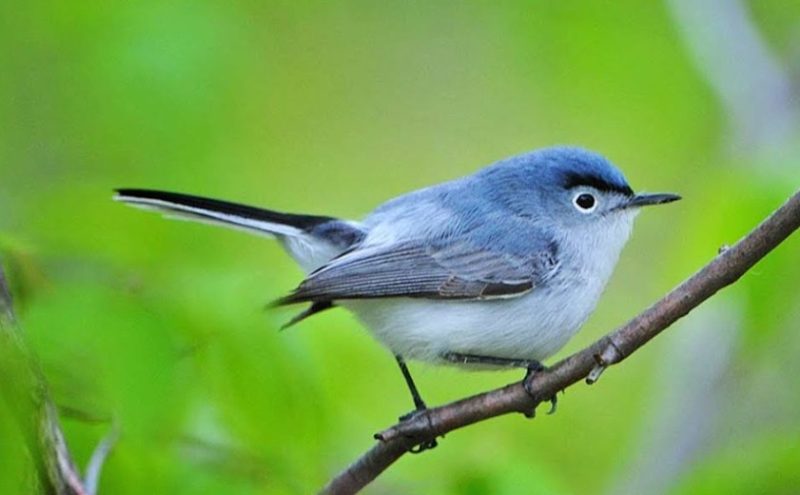
The Blue-gray Gnatcatcher is a tiny, energetic bird with soft blue-gray plumage, white underparts, and a long, black tail edged with white. It has a thin, slightly curved bill and a distinctive white eye ring. At just 4 to 5 inches long, this delicate bird is often compared to a miniature mockingbird. In Alabama, they are common in spring and summer and are often found in deciduous forests and shrublands.
True to their name, these birds primarily feed on gnats and other small insects, using acrobatic movements to pluck prey from leaves or catch them mid-flight. They’re constantly on the move, flicking their tails to flush insects while giving out high-pitched nasal calls. Their nests are tiny and compact, often camouflaged with lichen and spider silk, making them hard to spot.
A fun fact is that the Blue-gray Gnatcatcher builds one of the smallest nests among North American birds—about the size of a golf ball. These nests are architectural marvels and can be reused or repaired year after year, making this little bird a fascinating resident of Alabama’s woodlands and riverbanks.
Belted Kingfisher

The Belted Kingfisher is a bold, stocky bird with a shaggy crest and a loud, rattling call. Its slate-blue upperparts contrast with a white belly and a prominent blue breast band; females also sport an additional rusty band on the belly. It measures around 11 to 13 inches long with a wingspan of up to 22 inches. Common around Alabama’s rivers, lakes, and wetlands, it’s often seen perched above water or hovering before diving for prey.
Kingfishers primarily hunt by plunging headfirst into the water to catch small fish, crayfish, and aquatic insects. They use their strong, straight bills to snatch prey with precision. These birds dig nesting burrows into sandy banks near water, sometimes up to 8 feet deep, where they raise their young in darkness.
A fun fact about the Belted Kingfisher is that unlike most bird species, the female is more brightly colored than the male. Their raucous call is a signature sound along Alabama’s waterways, and their sudden plunges into the water are thrilling to witness.
Gray Catbird
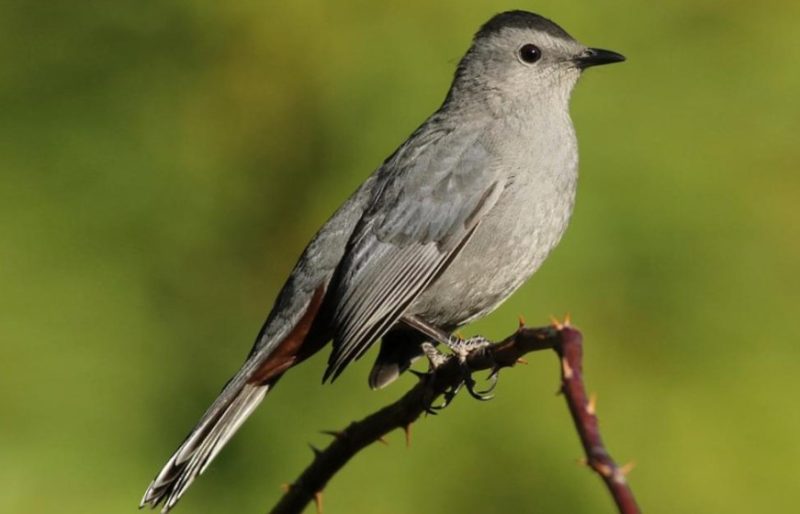
The Gray Catbird is a sleek, charcoal-gray songbird with a black cap and rust-colored undertail coverts. It’s about 8.5 inches long with a wingspan around 11 inches. This species gets its name from its cat-like “mew” call, which is commonly heard in dense shrubs and forest edges throughout Alabama, especially in spring and summer.
Catbirds are part of the mimid family, like mockingbirds and thrashers, and are excellent vocal mimics. They sing complex, rambling songs that include a mix of mimicry, clicks, whistles, and unique phrases. Their diet includes insects, fruits, and berries, and they often forage in low shrubs or on the ground. Though somewhat secretive, they may visit birdbaths and fruit feeders in quiet backyard corners.
A fun fact is that Gray Catbirds can recognize and reject cowbird eggs placed in their nests—a rare trait among songbirds. Their intelligence and expressive songs make them a favorite for birdwatchers in Alabama’s wooded gardens and suburban thickets.
Swainson’s Thrush
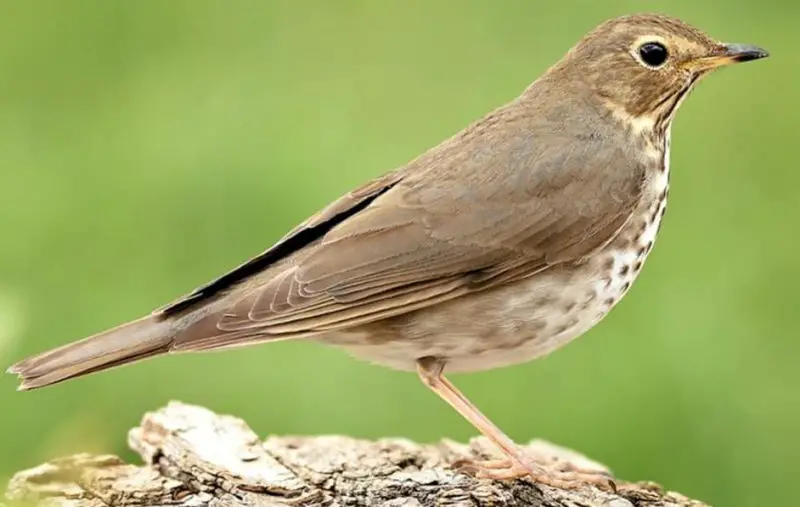
Swainson’s Thrush is a slender, medium-sized songbird with olive-brown upperparts, a pale belly, and buffy eye-rings that give it a gentle, wide-eyed expression. It measures around 7 inches in length with a wingspan of about 11 inches. This thrush is typically a migrant in Alabama, passing through during spring and fall on its way between Central America and its northern breeding grounds.
The bird prefers forested habitats during migration and feeds on insects and berries, often foraging on the forest floor or low branches. Its song is an ethereal, upward-spiraling melody that’s one of the most beautiful in the bird world. Though often quiet and hard to spot, it can be identified by its flute-like voice at dawn or dusk.
A fascinating fact is that Swainson’s Thrushes migrate thousands of miles at night, using the stars and Earth’s magnetic field to navigate. Their long journeys make Alabama’s forests an important stopover, providing fuel and rest during their epic travels.
FAQs About Backyard Birds in Alabama
What are the most common backyard birds in Alabama?
The most common backyard birds include species like the Northern Cardinal, Carolina Wren, Blue Jay, American Robin, and Mourning Dove. These birds are frequently seen year-round in various habitats across the state.
How can I attract more birds to my backyard in Alabama?
You can attract birds by providing fresh water, bird feeders with a variety of seeds (such as sunflower and millet), native plants for shelter and food, and safe nesting sites. Avoid using pesticides and keep cats indoors to protect visiting birds.
When is the best time to watch backyard birds in Alabama?
Birdwatching is enjoyable year-round, but spring and fall migration seasons offer the highest diversity of species. Early mornings are often the best time to observe birds actively feeding and singing.
What should I feed backyard birds in Alabama?
A mix of seeds like black oil sunflower, millet, and cracked corn works well. Suet is great for woodpeckers and insect-eating birds. Additionally, fruit such as berries can attract species like Cedar Waxwings.
How do I identify different bird species by their songs?
Learning bird songs takes practice. Start by listening to recordings online or using birding apps. Pay attention to patterns, pitch, and rhythm. Many backyard birds have distinctive calls that can help you identify them even when they are hidden.
Are there any endangered or protected backyard birds in Alabama?
Most common backyard birds are not endangered, but some species are protected by law, such as hawks and certain migratory birds. It is illegal to harm or disturb protected species or their nests.

